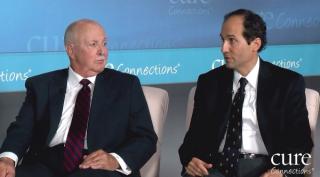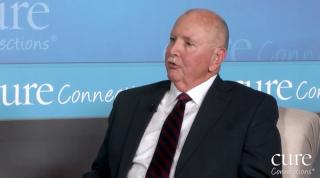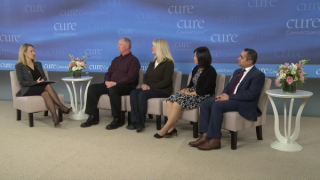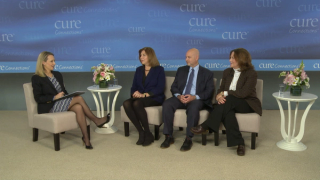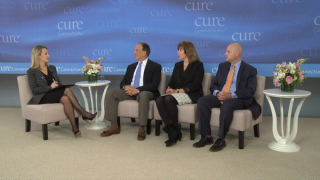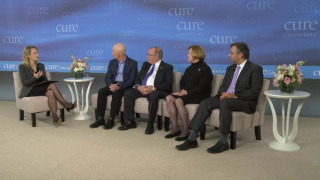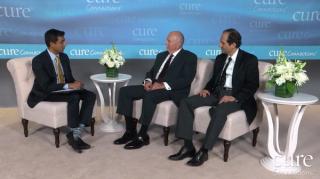
Liver Cancer
Latest News
Latest Videos

More News

Patients whose disease contained the osteopontin protein tended to have more aggressive liver cancer that did not respond to treatment.

Screening and diagnostic procedures for liver cancer as well as transplant programs and curative/palliative treatments were modified or delayed due to the COVID-19 pandemic, a new survey says.

Most people surveyed knew about the link between alcohol and liver cancer, but far fewer knew that drinking could increase breast cancer risk, too.

Treatment with the combination of Stivarga and Bavencio was associated with minor anti-tumor activity in patients with advanced, heavily pretreated biliary tract solid tumors.

Onivyde combined with a chemotherapy agent and a chemotherapy-protective drug should be used as a second-line treatment option in patients with metastatic liver cancer, according to an expert.

The Food and Drug Administration has had a busy couple of weeks, approving several agents to treat a variety of cancers. Here are five recent approvals that patients with cancer may have missed.

The FDA approved a kinase inhibitor for the treatment of adults with previously treated, unresectable locally advanced or metastatic cholangiocarcinoma with FGFR2 fusion or other arrangement.
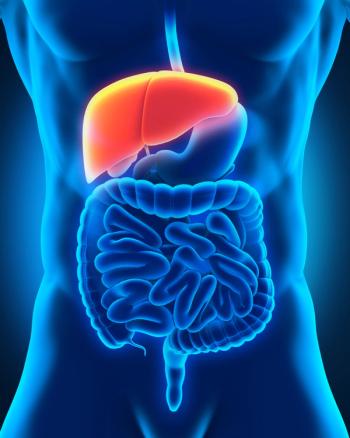
The study results, according to the authors, suggest that the combination of folinic acid plus the chemotherapies fluorouracil and oxaliplatin should become the standard-of-care therapy in patients with advanced biliary tract cancer whose disease progressed with cisplatin and gemcitabine.

Twenty percent of patients with resectable hepatocellular carcinoma had a significant amount of cell death when receiving Libtayo before surgical intervention.

Interim results from a phase 2 study demonstrated that patients inoperable or advanced intrahepatic cholangiocarcoma and a FGFR2 gene mutation had a disease control rate of 79% when treated with derazantinib.

Members of an FDA committee recently voted in favor of upholding Keytruda’s accelerated approval indication for the treatment of patients with advanced hepatocellular carcinoma who had previously received treatment with Nexavar. However, the committee narrowly voted against maintaining Opdivo’s accelerated approval in the same patient population.

As part of the “Speaking Out” video series, CURE® spoke with Dr. Laura M. Kulik about the basics of liver cancer, highlighting the need for a multidisciplinary approach to care.
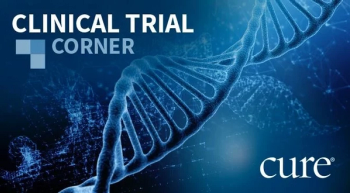
Here is a list of some recent trials that launched within the cancer space in April.

A 500 mg dose of Tepmetko, a MET inhibitor, in patients with hepatocellular carcinoma who were previously treated with Nexavar led to a 12-week progression-free survival rate of 63.3%.

CURE spoke with Dr. Marty T. Sellers and Dr. Laura M. Kulik, on behalf of the Blue Faery, about liver cancer and disease – its treatments, causes and areas outside of therapy.

Patients with this liver cancer subtype do not need to be hospitalized to receive this treatment and, according to the agent’s manufacturer, Boston Scientific, can typically receive the therapy in approximately an hour during an outpatient procedure.

Genomic testing has allowed patients to receive more specific drugs that target mutations in their tumors.

Following resection with radiotherapy increased survival rates for patients compared with those who did not receive the additional treatment.
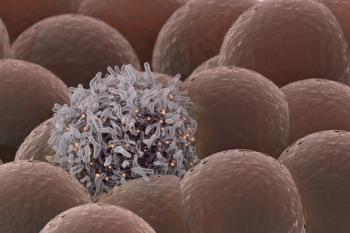
There are multiple treatment patients for patients with cholangiocarcinoma, here's what you need to know about them.

In a phase 2 study of 24 patients with biliary cancer, Aliqopa in combination with Gemzar and chemotherapy led to a six-month progression-free survival rate of 51% with a median overall survival of 13.7 months.

“Along with a tolerable safety profile and supportive quality of life, these final efficacy results demonstrate the clinical benefit of (Tibsovo) in (previously treated patients with IDH1-mutant cholangiocarcinoma), for which there is an urgent need for new therapies,” said an expert from Massachusetts General Hospital, who presented the data.

“This is the longest survival seen in a phase 3 study of advanced liver cancer,” lead study author Dr. Richard S. Finn, of the UCLA Jonsson Comprehensive Cancer Center, said in a virtual presentation of the data.

Patients with hepatocellular carcinoma who live in low-income and rural households are less likely to receive high quality care and therefore are more likely to be diagnosed with an advanced stage cancer.

Over the last 30 years, cases of childhood liver cancer have increased in the United States, Australia and a Canadian province.
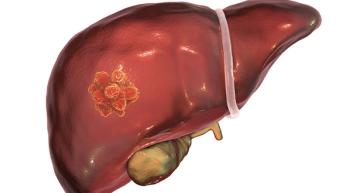
A roundup of liver cancer news and updates that occurred in 2020 patients with cancer may have missed.






